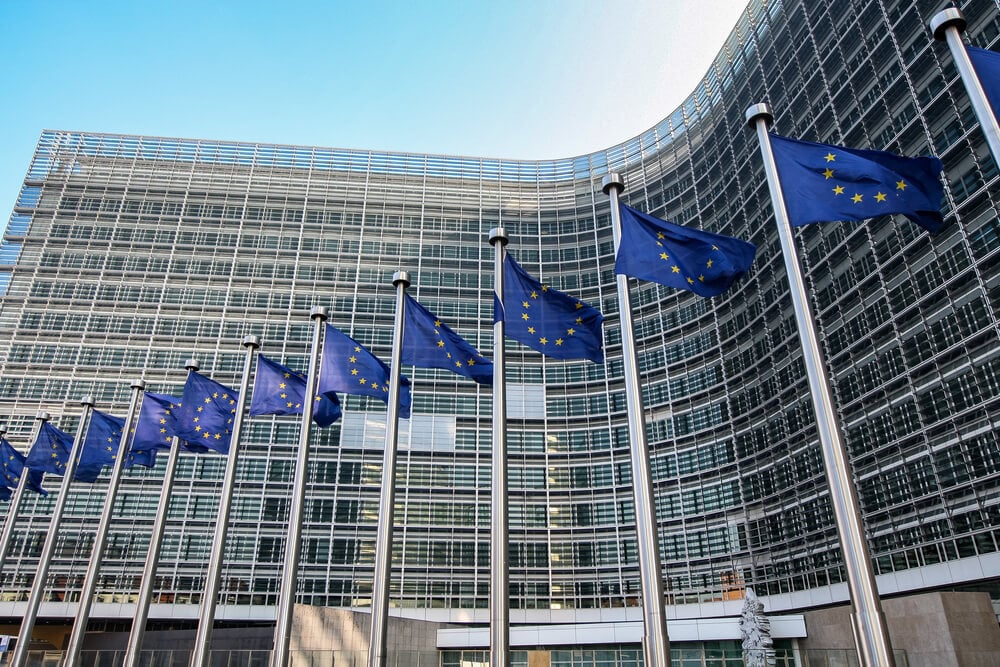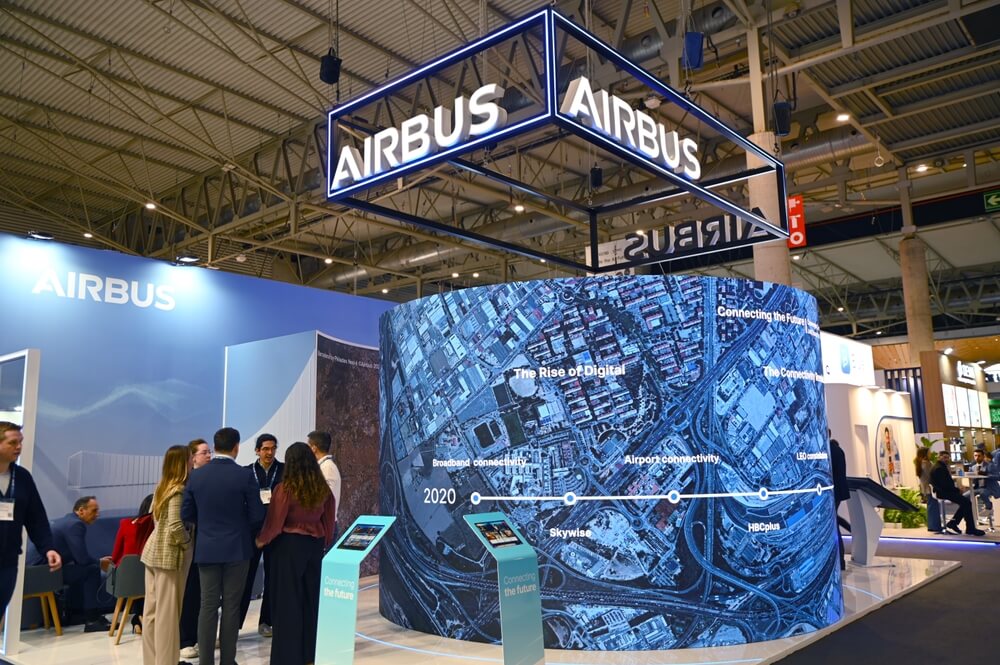On 23 October, Europe took a step that could transform its space industry. Three leading companies—Airbus, Thales, and Leonardo—announced the merger of their space activities into one company, aiming to end years of fragmentation, technical delays, and intracontinental competition.
The goal is to create a European actor strong enough to respond to the rapid development driven by SpaceX and its Starlink and to restore strategic control over Europe’s own space capabilities.
The agreement envisages a new company with around 25,000 employees, estimated annual revenues of about 6.5 billion euros, and headquarters in Toulouse, with an ownership structure of 35% Airbus and 32.5% each for Thales and Leonardo.
The plan is for the company to be operational in 2027, following regulatory approval and technical compliance.
This merger is not an ordinary business deal. It is a response to Europe’s long-standing delay in moving from geostationary satellites to modern constellations – networks of hundreds or thousands of smaller satellites in low orbit, that provide faster and cheaper data transmission.
At the same time, Europe has become dependent on American launch capacity, as its main launch company, Arianespace (the Franco-European operator of the Ariane and Vega rockets), has faced prolonged technical and logistical problems.
As a result, European missions are increasingly forced to use SpaceX, which has become the dominant provider of launch and in-orbit infrastructure.
The new joint company therefore has a clear task: to unite satellite production, systems and services within an integrated model, and to restore Europe’s control over its own access to space.
Ambition and integration challenges
The structure of the agreement reveals both the ambition and the limitations of the project.
Airbus will have the largest ownership share but a smaller share of the assets contributed to the new company, so financial compensation (“balancing payments”) is planned to equalise the value of each partner’s contribution until the transaction closes in 2027.
The new firm will include Thales Alenia Space and Telespazio – existing joint ventures between Thales and Leonardo – as well as Airbus’s key space and digital divisions.
The synergies are expected to deliver multimillions of savings over the next five years
It is a complex integration that requires the harmonisation of production processes, technical standards, intellectual property portfolios, and supplier networks across more than thirty locations in Europe.
The inspiration for this model comes from MBDA, a European consortium for the production of rocket systems, founded two decades ago by Airbus, BAE Systems, and Leonardo to unify research, development, and production and avoid duplication of capacity in different countries.
The principle is the same: reduce resource waste, accelerate development and share risk across a broader order base.
According to information released in recent days, the synergies are expected to deliver multimillions of savings over the next five years—without immediate facility closures but with gradual "rationalisation" as integration progresses.
Market shift and competitive pressure
This is happening because the satellite communications market has undergone a complete transformation.
With the LEO networks (Low Earth Orbit – satellites orbiting at altitudes of 500 to 1,200 kilometres), a new model has emerged: networks of hundreds or thousands of small satellites that together provide faster, more stable and cheaper data transmission.
Starlink has perfected this model: mass production, continuous improvement, and complete control of the chain, from the rocket to the user terminal.
In contrast, European companies continued to rely on slower, more costly geostationary projects, resulting in a loss of market momentum.
Therefore, this merger is not only a business decision but also a recognition that the European satellite industry can no longer be sustained through three separate, mutually competitive systems.
 The European Commission will examine in detail whether the merger distorts competition in certain segments, such as ground equipment, subsystems, and specialised services
The European Commission will examine in detail whether the merger distorts competition in certain segments, such as ground equipment, subsystems, and specialised services
The risks are significant and should not be underestimated. The European Commission will examine in detail whether the merger distorts competition in certain segments, such as ground equipment, subsystems, and specialised services.
Past experience shows that similar attempts in this industry have often failed due to disputed valuations of technologies still under development and disagreements over management methods.
Furthermore, the development of systems in low orbit requires an entirely different dynamic – faster production cycles, readiness for rapid obsolescence of equipment, and continual improvement of software and network protocols.
If the new company does not change its pace of work and remains at the level of formal integration, Europe will have a larger but still slow company, unable to respond to the pace set by American and Asian competitors.
Greater efficiency and lower costs — if Europe moves faster
However, the message to European governments and major users is clear. Eutelsat, one of the most important clients, has already announced that it expects concrete benefits from the new company in the form of greater efficiency and lower costs.
This shows that the market is ready to support this integration, but only if it can demonstrate that it can move faster and deliver at a competitive price.
This is especially important for state and institutional needs – from secure communications and satellite surveillance to meteorology and navigation.
Europe needs a network of reliable suppliers who can keep up with the demands of a time when decisions must be made and implemented much more quickly than before.
The annual revenue of 6.5 billion euros is significant
The numbers appear convincing, but they also serve as a warning. The annual revenue of 6.5 billion euros is significant, yet compared to the capacities and valuation of SpaceX, as well as Starlink’s investment plans, it represents only the initial threshold for entering serious competition.
Satellite constellation projects and their associated ground networks require substantial capital, a lengthy development cycle, and ongoing investment in modernisation.
If a new company does not enforce strong discipline in development and delivery, it can easily become a subcontractor in projects managed by others.
Therefore, it is important that the European Commission makes its approval conditional on specific deadlines and technical interoperability standards, while the governments of member states should provide framework orders to enable economies of scale and project sustainability from the outset.
Time is precious: Europe must change
The impact of this merger on the market will depend on whether Europe changes its mindset.
The key step forward would be a shift from a project-based to a production-based approach.
Starlink is successful because it treats the satellite as an ever-evolving product, rather than a unique piece of technology that takes years to build.
If the new European company adopts the same approach – standardised platforms, shared connectivity systems, a unified software system, modular ground equipment, and integrated logistics – only then will it be able to reduce costs and shorten development times.
In this case, both commercial and government users in Europe will benefit from shorter delivery cycles and predictable investment costs.
If it fails, European operators will continue to book their missions and communication capacities with American companies.
 By 2027, the transaction should be completed, overlaps eliminated, standards harmonised, and the first functional products demonstrated that can withstand comparison with the competition
By 2027, the transaction should be completed, overlaps eliminated, standards harmonised, and the first functional products demonstrated that can withstand comparison with the competition
Time is precious. By 2027, the transaction should be completed, overlaps eliminated, standards harmonised, and the first functional products demonstrated that can withstand comparison with the competition.
SpaceX is already accelerating the pace of launches, and Amazon's Kuiper is moving from the experimental stage to commercial use.
Europe has no room for another bureaucratic process. The new "champion" must deliver a concrete result – a satellite, network, and terminal working together in real-world conditions – before the next generation of LEO systems further widens the gap.
Europe has reached the point where making strategies is no longer sufficient – they must now be implemented.
Supporting a single large integrated manufacturer only makes sense if it is linked to an open architecture and genuine competition within the system.
The risk of creating a closed monopoly is not theoretical but real. Europe must combine a strong system integrator with a network of smaller, innovative firms that can rapidly introduce new technologies and solutions through open standards.
Only then does the concept of "technological sovereignty" acquire real meaning – the ability for key communications and security systems to rely on their own supply chains, without depending on foreign rockets and suppliers.
Europe cannot afford another delay
In the first phase, the effects of this merger will be limited. SpaceX has a significant advantage thanks to its complete control of the supply chain – from the production of satellites and rockets to the management of the network and end users.
However, there are areas where Europe can quickly demonstrate strength and reverse some of the trend.
These include security-critical communications that require legal and technical protection within European jurisdiction, specialised missions for EU institutions and member state governments, combined services from geostationary and low-orbit networks intended for industry, and integration with ground-based 5G and future 6G systems.
Europe cannot afford another delay. It must deliver a tangible result by 2027
If the new company establishes recognisable references and reliable standards in those segments, it will gradually enter the commercial broadband sector, initially through regional constellations and partnerships with national operators.
Such progress is realistically achievable within the first three years after 2027, provided it maintains the discipline, pace, and pragmatic approach that Europe has long avoided and which now determines whether it will remain relevant in the space economy at all.
Europe cannot afford another delay. It must deliver a tangible result by 2027 – a functioning satellite, an expanding network, and a system that can be manufactured continuously. Anything less would mean the project remains merely an ambition.
If that occurs, Europe will once again watch others set the rules and boundaries in a domain it once helped to build.
This merger is therefore not just a symbol but the last chance to prove that Europe still possesses the industrial strength, technical discipline, and political will to remain present in space on its own terms.